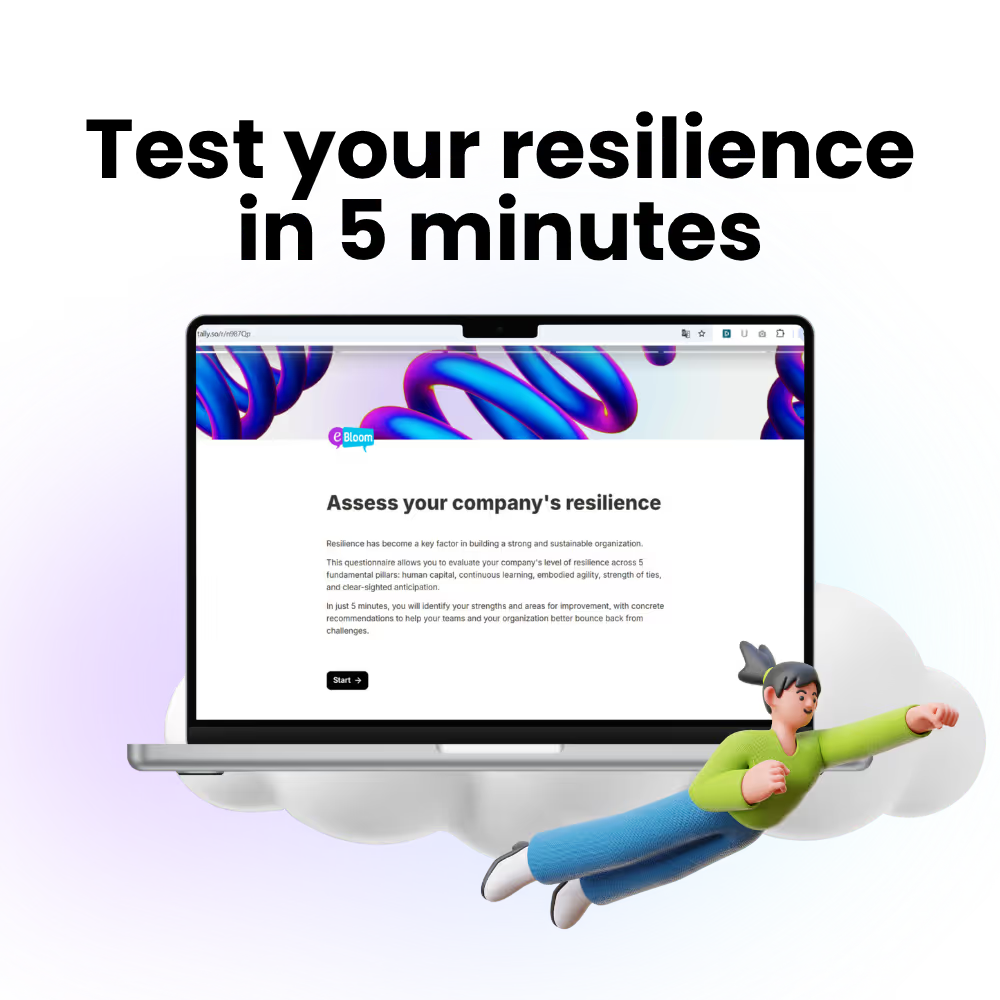
Employee experience is no longer a simple HR bonus or a “nice to have.” In 2025, it stands out as a major strategic lever to address concrete challenges: attracting the right profiles, reducing turnover, fostering engagement, and staying competitive in a constantly evolving environment.
Between skill shortages, the rise of AI, new generational expectations and professional burnout, companies have no choice: they must thoroughly rethink what their employees experience on a daily basis.
And the consequences are real. According to Gallup, disengagement costs the global economy more than $8.8 trillion per year, or about 9% of global GDP.
A good employee experience is therefore no longer a luxury, but a sustainable survival condition for companies.
It is the set of feelings, interactions and perceptions experienced by an employee throughout their journey within the company, from recruitment to departure. It covers many dimensions: quality of management, access to training, work-life balance, sense of recognition, company culture, meaningful work, digital environment…
More and more employees are evaluating this experience and making it visible: whether in their choice of employer, their daily engagement or their decision to leave an organization.
But concretely, what does a successful employee experience look like today?
Here are the 5 major trends to closely follow in 2025.
In Belgium, more than 500,000 workers are on long-term sick leave, with a third of medium and long-term absences due to psychosocial causes such as stress or burnout. The direct cost of absenteeism for a company with 100 employees amounts to €216,500/year, not counting indirect costs estimated to be 2.5 to 3 times higher (Securex, 2023).
In light of this, it becomes essential for companies to establish an organizational culture that protects and supports mental health: prevention measures, balanced workloads, open dialogue, and a healthy and inclusive work environment are expected as fundamental foundations. Offering a serious QVCT policy has become a standard.
According to the Gallup 2025 report, manager morale is in sharp decline: their engagement rate has dropped to 27%.
Yet their role is decisive: managers alone influence 70% of the variation in engagement within a team. When managers disengage, the quality of the employee experience suffers directly because they embody the company culture daily, ensure recognition, clarity of expectations, listening, autonomy and a sense of usefulness.
"Happy managers = happy staff"
As the Financial Times reminds us: “Happy managers = happy staff.” Investing in managerial development and tools is therefore not a luxury, but a direct lever of performance, retention and well-being.
Between fascination and fear, artificial intelligence is transforming jobs and organizations. But while it disrupts practices, it also raises questions for HR: how to support this transition humanely?
According to Deloitte, companies must now reconcile two imperatives: agility, essential to evolve in an uncertain environment, and stability, crucial to preserve employees’ trust, clarity and psychological safety.
This “stagility” – a blend of stability and agility – becomes a key challenge for the employee experience: employees want to take part in the digital transformation, while maintaining stable reference points, accessible continuous learning and human support through changes.
In 2025, offering the same training to everyone is like offering one shoe size for all: pointless. Employees now expect personalized learning paths, designed according to their skills, aspirations and pace of growth.
And for good reason: according to the World Economic Forum’s Future of Jobs Report 2025, 39% of skills will be obsolete by 2030. This shift forces companies to anticipate future needs and invest in agile, continuous learning solutions.
The most committed organizations are building a flexible learning ecosystem: immediate access to various content, customizable certifications, internal platforms, and individualized HR support. Employees become actors of their own development, in a co-construction dynamic.
This trend is particularly strong among generations Y and Z. According to the Deloitte report 2025, continuous learning, well-being and purpose are the three inseparable pillars of their work engagement. For them, the ability to grow, to learn continuously and to be supported in their progression is no longer a benefit: it’s a basic expectation.
Employees are no longer just looking for a job or competitive salary: they want to align with a mission, contribute to a meaningful project and grow in an environment consistent with their values.
Inclusion, sustainability, transparency, social commitment… these dimensions have become major criteria for fulfilment. They directly influence daily experience and team engagement. Especially for younger generations, who no longer hesitate to leave an organization that fails to meet its social or human commitments.
In 2025, it’s no longer the “displayed values” that matter, but the values that are actually lived. The consistency between discourse and reality becomes a central pillar of the employee experience.
Employee expectations are clear, as are the trends: what remains is action. Here are three concrete levers to sustainably and measurably strengthen the employee experience.
As organizations face rapid transformations, whether talent shortages, technological shifts or cultural change, employee experience can no longer be pushed aside.
It is now a key lever for building sustainable, stimulating and high-performing work environments. The five trends identified in 2025, well-being, human leadership, AI balance, continuous learning and quest for meaning, form a clear roadmap for all companies seeking to align economic performance with sustainable engagement.
More than an HR issue, employee experience becomes a collective responsibility, shared by the whole organization.
Companies that truly embody it will be those able to engage, retain and grow the talents of tomorrow.
🎯 Measure employee experience, track professional development, engage your talents sustainably… eBloom supports you every step of the way. Discover how.

.avif)



